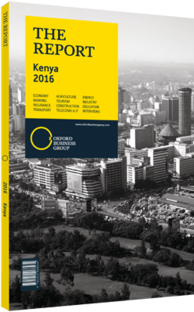Efforts to tackle problem of low-quality construction in Kenya
Increased competition in Kenya’s construction market is leading to notable improvements in quality standards, but persistent challenges remain, and there is a great need for increased regulatory support and more rigorous enforcement.
Recent years have seen many examples of poor building quality and the risks this presents. In early 2015, for example, the country’s National Construction Authority (NCA) reported that 70% of structures in the town of Naivasha have not been built to standard and pose a danger to the public. The NCA also found that many contractors were not registered and that unsafe working conditions were common. Among the areas identified as high risk are Huruma, Kariobangi, Umoja and Githurai, according to Adia Munano, a representative of the Ministry of Lands, Housing and Urban Development. The ministry’s buildings inspectorate reported in June 2015 that roughly half of the 1600 buildings it looked at in Nairobi needed repairs, with most of them lacking sufficient light and air circulation, but with 45 of them also structurally weak. The government gave building owners a month to make the required improvements and marked many deficient structures for demolition.
New Legislation
To remedy such issues in the capital city, a local law first proposed in 2014 was passed in August 2015 by the Nairobi City County Government. The Regularisation of Developments Bill requires developers who built homes without approval from the city government to reapply for permits, backed in theory by the threat of demolition for non-compliance. The law also covers buildings that are in breach of standards set by the NCA and the Planning and Housing Department, and allows for water and electricity supply to be cut off as a means of enforcement. According to the county governor, Evans Kidero, projects that were built without county permission can receive post facto approvals during a six-month grace period that began in September 2015. He said approval will be granted to any building that was structurally sound and that those with minor defects will need to be fixed under the instructions of teams of engineers hired by the county. Kidero told local media that the region had some 50,000 of such unapproved structures, and that if their builders did not comply, “We will pull them down.”
Public Awareness
The East African Portland Cement Company and the Kenya Alliance of Resident Associations have meanwhile teamed up to conduct a public awareness campaign on the issue of poor construction, including hosting public forums for sector stakeholders to discuss ways to enhance safety and prevent building collapses. To reduce the number of accidents that are caused by poor standards, the National Environmental Management Agency has called on residential associations to begin to take a more active part in construction in the neighbourhoods where projects are taking place, and has urged contractors to embark on consultations with these associations before going ahead with projects.
Privatising Inspections
In another significant move that could have wide-ranging implications for the sector, the Nairobi County Council has drafted a policy that would shift the responsibility of inspections and building approvals to the private sector. This proposal was endorsed in May 2015 by the NCA, which sees the plan as a way to save money and safeguard against shoddy construction. The hope is that it will ensure coverage of a wider geographic area as well. Privatising building inspections, rather than relying on the same agency to both grant approvals and carry out inspections, would avoid conflict of interest and would also constitute a significant reform. One study of the sector carried out by a team of engineers after a recent building collapse described a lack of capacity and low pay for construction workers, the result of which was poor recruitment and retention of qualified and experienced building professionals.
You have reached the limit of premium articles you can view for free.
Choose from the options below to purchase print or digital editions of our Reports. You can also purchase a website subscription giving you unlimited access to all of our Reports online for 12 months.
If you have already purchased this Report or have a website subscription, please login to continue.

